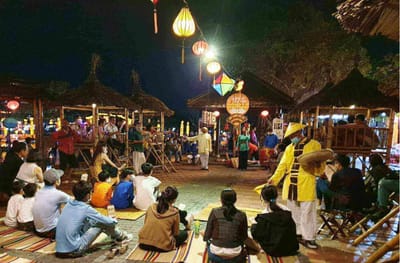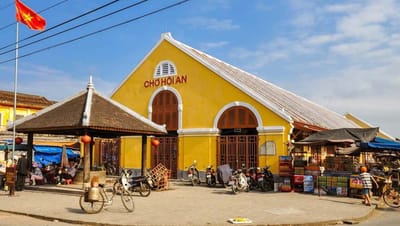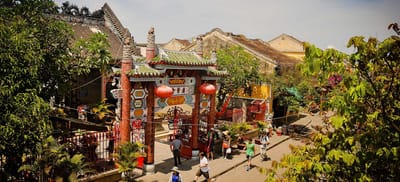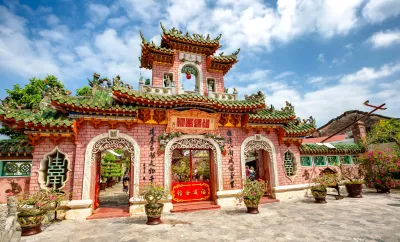Hoi An Ancient Town: Complete UNESCO World Heritage Guide
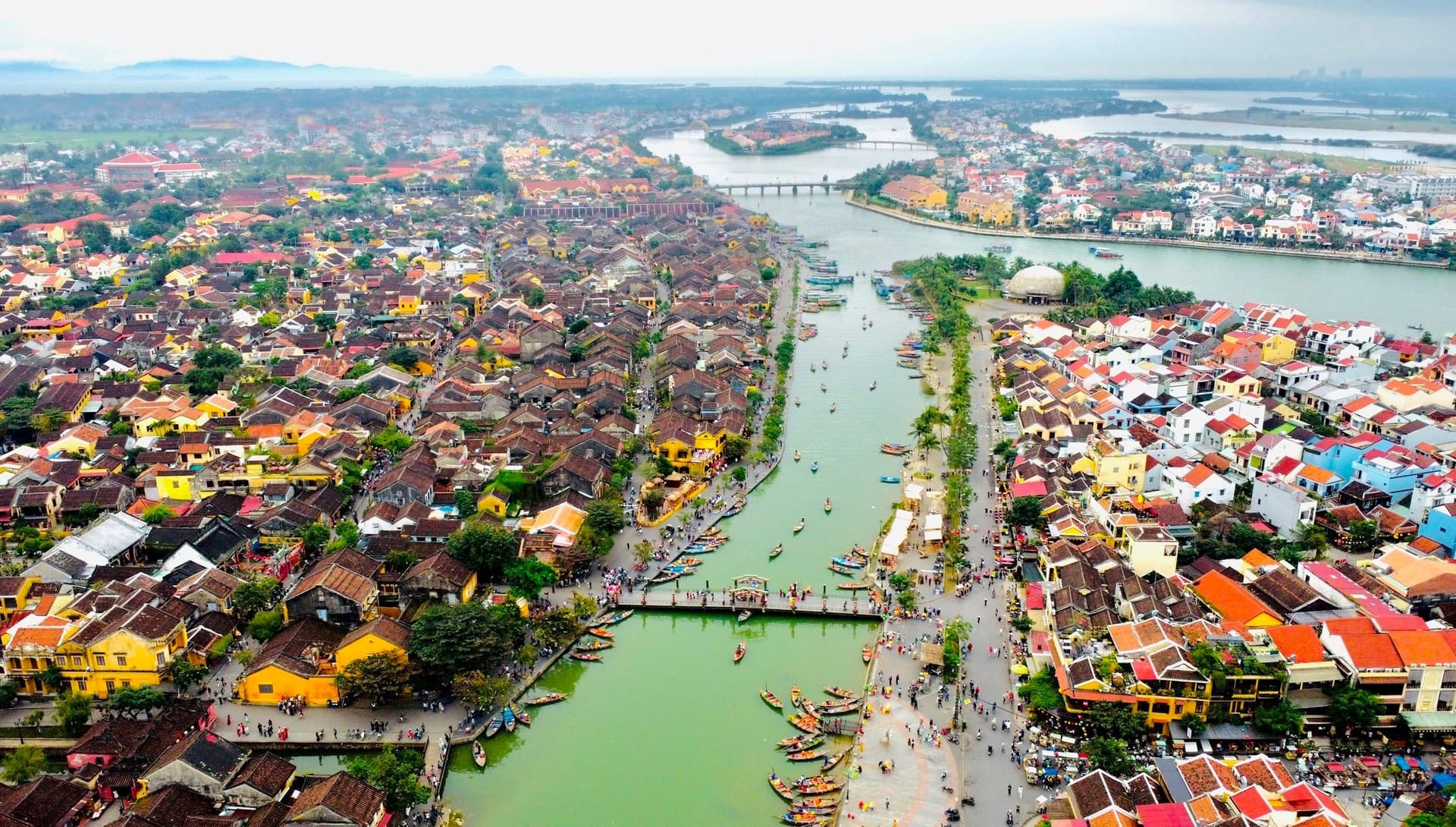
On December 4, 1999, the world turned its attention to a small port town on Vietnam's central coast. UNESCO's decision to inscribe Hoi An Ancient Town on the World Heritage List recognized something extraordinary: a 400-year-old trading port that had survived wars, economic upheaval, and the relentless march of modernization virtually intact.
Today, more than 25 years after that historic designation, Hoi An Ancient Town remains one of Southeast Asia's most authentic glimpses into the region's mercantile past. For heritage enthusiasts and cultural scholars seeking to understand the forces that shaped Asian maritime trade, Hoi An offers an unparalleled living laboratory where history continues to breathe through every timber beam and cobblestone street.
Why UNESCO Designated Hoi An as World Heritage
Outstanding Universal Value
Hoi An Ancient Town met two of UNESCO's strict criteria for World Heritage designation—a distinction that underscores its global significance. According to UNESCO's official documentation, the site qualified under:
Criterion II: Hoi An represents "an outstanding physical manifestation of the fusion of cultures over time in an international commercial port." The town's architecture and urban fabric reveal how indigenous Vietnamese traditions absorbed and integrated influences from Japanese, Chinese, and later European merchants over four centuries.
Criterion V: The ancient town stands as "an exceptionally well-preserved example of a small-scale trading port active from the 15th to 19th centuries which traded widely, both with the countries of Southeast and East Asia and with the rest of the world."
What makes Hoi An truly exceptional, however, is not merely its age or architectural beauty, but the authenticity of its preservation. The town comprises 1,107 timber-frame buildings, with brick or wooden walls, spread across a 30-hectare core zone. These structures include architectural monuments, commercial buildings, vernacular residences, religious edifices such as pagodas and family shrines, and critical infrastructure like markets and ferry quays—all maintaining their original functions and character.
The Paradox of Decline and Preservation
Hoi An's remarkable state of conservation stems from an unlikely source: economic decline. By the late 19th century, the Thu Bon River—the town's commercial lifeline—began silting up, gradually rendering the port inaccessible to larger vessels. As maritime trade shifted to nearby Da Nang with its deeper harbor, Hoi An's economy stagnated.
This economic marginalization proved to be Hoi An's salvation. Without the capital or motivation to modernize, residents continued maintaining their wooden structures using traditional methods passed down through generations. The town avoided the destructive forces of rapid urbanization that transformed other Vietnamese cities during the 20th century. Even the devastation of the Vietnam War largely bypassed Hoi An, leaving its architectural heritage intact.
When UNESCO officials arrived in the 1990s to assess the site, they found something increasingly rare in rapidly developing Asia: an authentic historic townscape that had retained its traditional urban tissue to a remarkable degree.
The Historical Tapestry: From Champa to UNESCO
Ancient Foundations (2nd-15th Centuries)
Long before Hoi An became a Vietnamese trading hub, the region served as a vital center for the Champa Kingdom. Archaeological evidence reveals that from the 2nd to 15th centuries, the Cham people—heavily influenced by Indian culture through Hinduism and later Mahayana Buddhism—established a sophisticated maritime trading network here.
The nearby My Son Sanctuary, another UNESCO World Heritage Site, testifies to the Cham civilization's architectural and spiritual achievements. This Hindu temple complex, located just 40 kilometers from Hoi An, demonstrates the region's long history as a crossroads of cultures and commerce.
Vietnamese Consolidation (15th-16th Centuries)
The town's transformation into a major Vietnamese trading port began in earnest during the 15th century under the Nguyen Lords' policy of "Nam Tien" (Southward Expansion). In 1558, Nguyen Hoang was appointed governor of Thuan Hoa, and by 1570, he also controlled Quang Nam province, including Hoi An.
Recognizing the strategic and economic potential of the location, the Nguyen rulers designated Hoi An as the international gateway of their southern kingdom. They invested in fortifications and infrastructure, establishing Hoi An as a regional hub that would soon attract merchants from across the known world.
The Japanese Golden Age (1604-1635)
The early 17th century witnessed Hoi An's emergence as one of Southeast Asia's most dynamic international ports. When China reopened its ports in 1567 and Japan allowed the issuance of "Red Seal Ships" (Shuinsen) from 1604, Hoi An experienced a trade renaissance.
Historical records document that at least 75 Japanese ships docked at Hoi An during this period—more than double the number visiting ports in northern Vietnam. Japanese merchants, primarily from Nagasaki, traded silver, copper, and household goods for Vietnamese silk, sugar, ceramics, and the highly prized agarwood.
This commercial boom brought permanent Japanese settlement. By 1617, a distinct Japanese Quarter had emerged along the river, characterized by multi-story wooden houses that reflected architectural traditions from home. The iconic Japanese Covered Bridge, constructed between 1593 and 1595, physically and symbolically connected the Japanese Quarter with the neighboring Chinese community. Today, this bridge remains Hoi An's most recognizable landmark, featured on Vietnam's 20,000 dong banknote.
However, Japan's isolation policy under the Tokugawa Shogunate abruptly ended this golden age in 1635. With Japanese trade halted, the Japanese community gradually assimilated into the local population, leaving behind architectural and cultural legacies that remain visible today.
Chinese Dominance (17th-19th Centuries)
As Japanese influence waned, Chinese immigration surged. The Ming-Qing transition in China (1644) sent waves of refugees to Hoi An, establishing what became known as "Minh Huong Villages." These communities—organized primarily by regional origin (Fujian, Cantonese, Hainan, and Chaozhou)—built distinctive assembly halls that served as community centers, temples, and commercial organizations.
The Chinese imprint on Hoi An's urban fabric became profound and permanent. The assembly halls, with their elaborate architectural details and religious significance, represent some of the town's most important heritage structures. The Fujian Assembly Hall, built in 1697 and dedicated to the sea goddess Thien Hau, exemplifies the ornate style that characterized Chinese religious architecture in Southeast Asia.
Chinese merchants dominated Hoi An's economy throughout the 18th and 19th centuries, trading in silk, ceramics, tea, and spices. Their wealth and influence shaped not only the town's commercial life but also its cultural identity, cuisine, and urban landscape.
European Engagement (17th-19th Centuries)
While maintaining robust relations with Asian partners, Hoi An also attracted European interest. Portuguese, Dutch, English, and French traders established commercial relationships with the Nguyen Lords, though European influence remained more limited than in other Southeast Asian ports.
European merchants sought Vietnamese silk, ceramics, and agricultural products, offering in return textiles, dyes, metals, and eventually firearms. These interactions introduced new architectural elements—particularly French colonial influences visible in some buildings' shutters, balconies, and color schemes—creating the unique fusion style that characterizes Hoi An today.
For those interested in the complete historical narrative of Hoi An, including detailed accounts of the UNESCO recognition process, a comprehensive timeline traces the town's evolution from ancient trading post to world heritage treasure.
Architectural Fusion: The Physical Expression of Cultural Exchange
The Vietnamese Tube House Foundation
At the heart of Hoi An's architectural identity lies the Vietnamese tube house—a distinctive building type that evolved in response to commercial imperatives and environmental conditions. These narrow, deep structures typically measure 3-6 meters in width but extend 60-70 meters from street to river.
The tube house design reflected both practical and economic considerations. Taxes were assessed based on the width of a building's street-facing facade, encouraging narrow frontage. The depth allowed for multiple functions: the street-facing section housed shops where merchants displayed goods; central courtyards provided light, ventilation, and rainwater collection; residential quarters occupied the middle sections; and the river-facing rear facilitated the loading and unloading of goods from boats.
This architectural form, common across Vietnam, took on unique characteristics in Hoi An through the integration of foreign design elements. The result was something unprecedented in Southeast Asian architecture: a building type that functioned as a Vietnamese commercial structure while incorporating Japanese construction techniques, Chinese decorative elements, and later, European stylistic flourishes.
Japanese Structural Innovations
Japanese influence appears most prominently in Hoi An's structural engineering. The ceiling designs in houses like Tan Ky and Duc An employ a distinctive triple-beam system, where three progressively shorter beams rest one atop another. This Japanese technique provided both structural support and aesthetic appeal while allowing for flexible interior spaces.
Traditional Japanese joinery methods—particularly the use of mortise-and-tenon connections without nails—gave Hoi An's buildings remarkable resilience. Tan Ky House, built in 1741, stands as a testament to this construction wisdom: nearly three centuries later, the structure remains sound despite annual flooding and the region's humid climate.
The Japanese Covered Bridge exemplifies this architectural synthesis at its finest. While the covered bridge concept originated in Japan, the Hoi An version incorporates Vietnamese and Chinese elements, creating a unique structure that has become synonymous with the town itself.
Chinese Decorative Traditions
Chinese influence manifests primarily in decorative elements and spatial organization. The elaborate wood carvings adorning Hoi An's buildings feature motifs rich in Chinese symbolism: dragons representing power and good fortune, fish transforming into dragons symbolizing success and transformation, pomegranates signifying prosperity, and bats representing happiness.
The iconic yellow-ochre color that defines Hoi An's streetscape also reflects Chinese aesthetic preferences. This warm hue, combined with moss-green wooden shutters and red terracotta tiles arranged in the "yin-yang" pattern (alternating concave and convex tiles), creates the distinctive visual character that makes Hoi An instantly recognizable.
Interior spaces in Hoi An's ancient houses often feature Chinese ancestral altars, calligraphic couplets, and furniture styles imported from various regions of China. These elements transformed Vietnamese domestic architecture into something uniquely cosmopolitan.
European Refinements
French colonial influence, though arriving relatively late in Hoi An's architectural evolution, added the final layer to the town's stylistic fusion. Louvered shutters, wrought-iron balcony railings, and specific color palettes introduced during the colonial period (1888-1954) became integrated into Hoi An's architectural vocabulary.
Some buildings constructed in the early 20th century represent a conscious fusion of traditional Vietnamese forms with French colonial elements, creating what architectural historians call the "Indochinese" style. These structures feature French-style facades with Vietnamese spatial organization inside, perfectly embodying the cultural synthesis that defines Hoi An.
For those seeking deeper understanding of Hoi An's architectural language, a dedicated guide to traditional architecture explains how to read and appreciate the fusion of styles that makes every building in the ancient town a lesson in cultural exchange.
The Heritage Core: Understanding Hoi An's Structure
The UNESCO Protected Zone
The inscribed World Heritage property encompasses 30 hectares, with a buffer zone of 280 hectares protecting the site from external pressures. Within this core area, the original street plan—which developed organically as the town grew into a major port—remains intact.
The urban layout follows a logical grid: one main axis runs parallel to the Thu Bon River, while perpendicular streets and alleys extend at right angles. This pattern facilitated both commercial activity and daily life. Buildings typically fronted the streets for customer access, while their backs opened to the river for cargo handling—a design that reflected Hoi An's dual nature as both a residential community and commercial hub.
Key Heritage Districts
Hoi An's historic core divides into several distinct areas, each with its own character and significance:
The Ancient Town Center: Centered on Tran Phu Street, this area contains the highest concentration of heritage buildings, including major assembly halls, ancient houses, and the Japanese Covered Bridge. This is where Hoi An's multicultural heritage is most visibly expressed.
The Japanese Quarter: Though the original Japanese community assimilated centuries ago, this area retains the spatial organization and some architectural elements from the 17th-century Japanese settlement. The Japanese Covered Bridge marks the traditional boundary of this quarter.
The Chinese Quarters: Multiple Chinese communities established distinct neighborhoods, each centered around their respective assembly halls. These areas preserve not only architectural heritage but also living cultural traditions, including religious practices and festivals.
The Riverfront: The Thu Bon River waterfront, lined with traditional shophouses and punctuated by ferry landings and market areas, represents Hoi An's commercial heart. Though less busy than in centuries past, this area still functions as a working waterfront.
Understanding these districts helps visitors appreciate how Hoi An's urban fabric reflects its multicultural heritage. For practical guidance on experiencing these areas, our self-guided walking routes provide detailed navigation through the ancient town's most significant quarters.
Exploring Hoi An's Heritage Attractions
Hoi An Ancient Town is home to over a thousand heritage buildings, but a subset of sites hold particular historical and cultural significance. These include iconic landmarks like the Japanese Covered Bridge and Tan Ky Ancient House, as well as notable assembly halls, traditional markets, and important museums.
For visitors seeking a detailed understanding of these key heritage sites—including their history, architectural features, visiting hours, and practical tips—we invite you to explore our comprehensive guide to the top 15 heritage attractions in Hoi An Old Town. This dedicated resource offers in-depth insights that complement the broader heritage overview provided here.
Planning your visit around these highlights will ensure a rich, meaningful experience of Hoi An's unique legacy while supporting ongoing conservation efforts through responsible heritage tourism.
Beyond Buildings: Intangible Heritage
Living Cultural Traditions
Hoi An's UNESCO designation protects not only physical structures but also the intangible cultural heritage that gives the town its soul. Traditional craft villages surrounding the ancient town—including Thanh Ha pottery village (with 500+ years of ceramic-making tradition), Kim Bong carpentry village, and Tra Que vegetable village—continue practicing skills passed down through generations.
These villages supply both traditional goods and authentic cultural experiences for visitors interested in understanding the living traditions that have sustained Hoi An through centuries of change. The crafts practiced here—pottery-making, woodworking, silk weaving, and lantern crafting—represent vital links to the town's commercial past.
Festivals and Religious Observances
Traditional festivals in Hoi An punctuate the annual calendar, predating the town's UNESCO designation by centuries. The Full Moon Lantern Festival, held monthly on the 14th day of the lunar calendar, transforms the ancient town into a sea of colored lanterns while residents honor their ancestors through offerings and prayers.
Other significant observances include the Nguyen Tieu festival, Tet (Lunar New Year) celebrations with unique local customs, and the Mid-Autumn Festival. These events are not staged for tourists but represent genuine cultural practices that connect contemporary residents with their heritage.
Culinary Heritage
Hoi An's unique cuisine represents another form of intangible cultural heritage. Signature dishes like Cao Lau (special noodles prepared with water from specific local wells), White Rose dumplings (Banh Bao Banh Vac), and Com Ga (Hoi An chicken rice) reflect the town's multicultural past through their ingredients, preparation methods, and flavors.
These dishes, along with numerous other local specialties, embody centuries of culinary exchange. For food enthusiasts, a comprehensive Hoi An food guide explores the historical and cultural contexts of the town's distinctive cuisine.
Contemporary Heritage Management
Conservation Challenges and Responses
Managing Hoi An Ancient Town as both a living community and a World Heritage Site presents ongoing challenges. Since UNESCO recognition in 1999, visitor numbers have increased dramatically—from 100,000 annual visitors in 1999 to over 4.4 million in 2024, including approximately 3.57 million international tourists.
This tourism boom brings economic benefits but also creates pressure on historic structures, strains infrastructure, and risks commodifying authentic cultural practices. The Hoi An Cultural Heritage Management Centre, established under the 1997 Hoi An Town Statute, coordinates preservation efforts while managing these competing demands.
Since 2008, more than 400 heritage structures have undergone restoration at a cost exceeding 150 billion VND (approximately 5.9 million USD), funded through both government allocations and community contributions. These restoration projects follow strict guidelines to ensure authenticity, using traditional materials and construction techniques wherever possible.
The Ticket System and Heritage Funding
Hoi An employs a heritage ticket system that generates revenue directly invested in conservation and management. Visitors purchasing an Old Town ticket gain access to five heritage sites within the protected zone, with ticket proceeds funding ongoing preservation work.
This self-funding model has proven remarkably successful, allowing Hoi An to maintain its heritage without complete dependence on government budgets. The system also regulates visitor flow to sensitive sites, helping prevent overcrowding and physical damage to fragile historic structures.
Digital Documentation and Future Planning
Recognizing that physical preservation alone cannot guarantee heritage protection, Hoi An has embraced digital technology in heritage management. More than 1,500 relics and artifacts have been digitally documented, creating detailed records that serve multiple purposes: restoration planning, virtual exhibitions, educational programs, and disaster recovery preparedness.
The provincial government's plan for 2024 focuses on preserving and promoting heritage until 2030, with a goal for 2035 to fully restore all damaged heritage sites and carefully document all physical and non-physical cultural heritage. This ambitious plan seeks to expand the heritage protection zone to ensure the integrity and outstanding universal value of the ancient town while developing Hoi An as a leading cultural and ecotourism hub in the region.
Visiting Hoi An: Heritage Tourism Guidelines
Responsible Heritage Tourism
As a living World Heritage Site, Hoi An depends on visitors who understand and respect its cultural significance. Heritage tourism here goes beyond merely photographing attractive buildings; it involves engaging thoughtfully with a community that has maintained these traditions for generations.
The ancient town welcomes more than 10,000 visitors daily during peak seasons. To manage this volume while protecting heritage values, Hoi An has implemented car-free zones in the historic core. Motorized traffic was banned from 9:00 AM to 11:00 AM and 3:00 PM to 10:00 PM daily. This policy preserves the pedestrian character of the ancient streets while reducing air pollution and physical damage to historic structures.
Essential Visitor Information
Entry Requirements: The UNESCO-protected core zone requires an entry ticket (120,000 VND as of 2025) for access to heritage buildings, including assembly halls, ancient houses, and museums. However, walking the streets, shopping, and dining in the ancient town require no ticket. Detailed information about ticket requirements and usage helps visitors plan their heritage experience effectively.
Best Times to Visit: Hoi An's climate divides into distinct seasons. The dry season (February to August) offers ideal weather for exploration, while the rainy season (September to January) brings occasional flooding—a phenomenon Hoi An has adapted to over centuries. The monthly Full Moon Lantern Festival provides a unique opportunity to experience the town's cultural traditions.
Cultural Etiquette: When visiting religious sites like assembly halls and temples, modest dress (covering shoulders and knees) shows respect for sacred spaces. Photography is generally permitted, but visitors should ask permission before photographing people, particularly elderly residents and during religious ceremonies.
Planning Your Heritage Experience
For first-time visitors potentially overwhelmed by Hoi An's rich heritage offerings, our essential guide for first-time visitors provides a focused introduction to must-see sites and experiences. Those seeking a more comprehensive exploration will benefit from detailed information about the top 15 heritage attractions, each with visiting tips, historical context, and suggestions for meaningful engagement.
Photography enthusiasts will find Hoi An endlessly rewarding, with its yellow walls, lantern-lit streets, and historic architecture providing exceptional subjects. A specialized photography guide identifies the best locations and times for capturing the ancient town's visual character while respecting cultural sensitivities.
The evening and night experience in Hoi An deserves particular attention. As darkness falls, the ancient town transforms: lanterns illuminate the streets, the night market comes alive, and traditional performances begin. This nocturnal side of Hoi An reveals different aspects of its cultural heritage.
Research and Educational Resources
Museums and Learning Centers
Hoi An offers several museums that provide scholarly context for the town's heritage:
The Museum of Trade Ceramics displays artifacts excavated from shipwrecks and trading sites, documenting Hoi An's commercial relationships with Japan, China, India, and other trading partners. The ceramics collection reveals not only artistic traditions but also trade routes and cultural exchange patterns spanning centuries.
The Museum of Folk Culture explores traditional life in Hoi An and the surrounding region, featuring exhibits on domestic customs, agricultural practices, traditional crafts, and social organization. This museum helps visitors understand the cultural context underlying the physical heritage visible in the streets.
The Museum of History and Culture provides a chronological overview of Hoi An's development from ancient times through the present, placing the town's heritage within broader Vietnamese and Southeast Asian historical contexts.
Academic and Professional Resources
The Hoi An Cultural Heritage Management Centre maintains detailed documentation of heritage sites and coordinates with international organizations on conservation research. Scholars and heritage professionals seeking in-depth information about specific aspects of Hoi An's heritage can access resources through the Centre and affiliated institutions.
The official UNESCO World Heritage Centre website provides access to nomination documents, periodic reporting, and technical assessments of Hoi An Ancient Town, offering valuable resources for academic research and professional heritage management studies.
Looking Forward: Heritage Sustainability
Balancing Preservation and Development
Twenty-five years after UNESCO recognition, Hoi An faces complex questions about sustainable heritage management. How can the town accommodate growing tourism while protecting fragile historic structures? How can traditional communities maintain their cultural practices amid commercialization pressures? How can heritage preservation contribute to local economic development without destroying the authenticity it seeks to protect?
These challenges are not unique to Hoi An but are shared by heritage sites worldwide. The town's responses—community engagement in heritage management, revenue reinvestment in conservation, expansion of tourism to surrounding areas to reduce pressure on the core zone, and integration of heritage values into urban planning—offer models potentially applicable elsewhere.
Climate Adaptation and Heritage Resilience
Climate change poses new threats to Hoi An's heritage. Annual flooding, which the town has experienced for centuries, is becoming more severe and frequent. Sea-level rise threatens the Thu Bon River delta system. Extreme weather events risk damage to timber structures already vulnerable due to age.
Addressing these challenges requires innovative approaches that respect heritage values while adapting to new environmental realities. Current initiatives include improved drainage systems, flood-resistant restoration techniques, and emergency response planning designed to protect heritage during extreme weather events.
Community and Heritage
Ultimately, Hoi An's success as a World Heritage Site depends on the community that lives within and around the ancient town. Local residents are not merely custodians of heritage buildings but living links to the traditions, skills, and cultural practices that give those buildings meaning.
Programs supporting traditional crafts, encouraging heritage-based livelihoods, and educating younger generations about Hoi An's significance help ensure that the town remains a living cultural landscape rather than an open-air museum. The designation in 2023 of Hoi An as a UNESCO Creative City in the field of crafts and folk arts recognizes this vital connection between intangible and tangible heritage.
Conclusion: A Heritage for Humanity
Hoi An Ancient Town represents more than an exceptionally well-preserved historic port. It embodies principles of cultural exchange, adaptation, and resilience that resonate far beyond Vietnam's borders. The town's architecture demonstrates how diverse influences can merge into coherent new forms. Its survival proves that heritage preservation and contemporary life can coexist. Its ongoing evolution shows how communities can honor the past while building sustainable futures.
For heritage enthusiasts, cultural scholars, and thoughtful travelers, Hoi An offers an unparalleled opportunity to witness and understand these processes firsthand. Walking streets where Japanese merchants traded silver for silk 400 years ago, entering assembly halls where Chinese communities maintained their traditions far from home, or observing craftsmen practicing skills unchanged for generations connects us to the larger human story of migration, trade, cultural exchange, and community resilience.
As Hoi An continues its journey into the future—adapting to climate change, managing tourism growth, and sustaining traditional practices in a modern economy—it does so as a reminder that humanity's heritage belongs to all of us and that preserving it requires both respect for the past and creativity for the future.
No spam, no sharing to third party. Only you and me.


